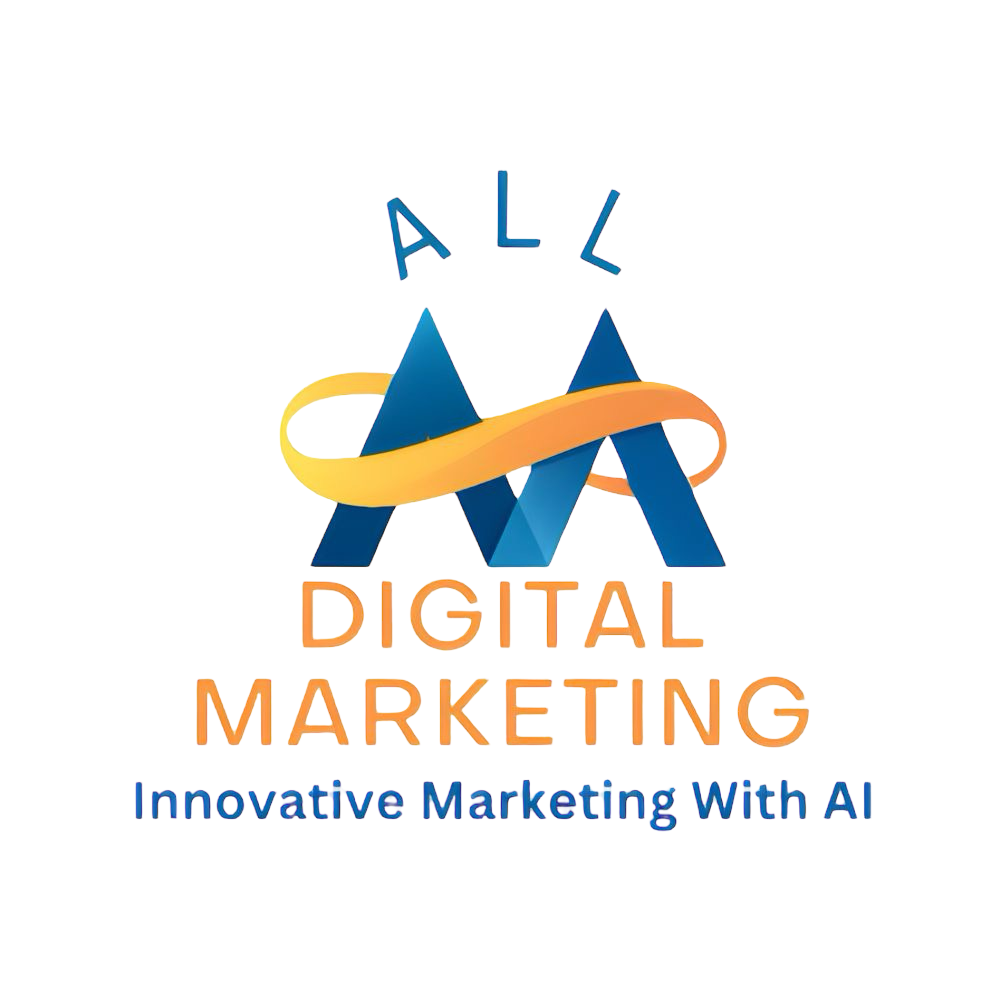Did you know that businesses using AI for client acquisition grow 50% faster than their competitors? That fact alone explains why leaders everywhere are investigating how AI can help a business gain clients quickly. In today’s fast-paced world, standing still is falling behind—and artificial intelligence is now the rocket fuel for small business growth, client acquisition, and retention. This guide reveals unconventional methods, practical AI tools, and must-try strategies to supercharge your small business growth using artificial intelligence, generative AI, and advanced ai tools—helping you outperform your competition and maximize client acquisition. Staggering Growth: Why Understanding How AI Can Help a Business Gain Clients Matters Now Businesses using AI for client acquisition grow 50% faster than competitors. AI-powered lead generation tools have doubled conversion rates in small business sectors over the last year. In recent years, the adoption of artificial intelligence and ai tools by small businesses has transformed client acquisition, engagement, and retention strategies, driving faster growth and significantly improving customer experience and customer satisfaction. The integration of AI tools—ranging from smart lead generators to advanced analytics—has unlocked new levels of efficiency, helping business owners crush growth targets that once seemed unreachable. Entrepreneurs everywhere are tapping into AI to automate their most repetitive tasks , analyze customer preferences, and deliver personalized experiences to prospects. The reason this matters more than ever is simple: your rivals are already leveraging these tools. With technology evolving so quickly, it’s crucial to understand how AI can help a business gain clients before your competitors outpace you. Whether you’re a seasoned professional or a new small business owner , AI offers massive opportunities to enhance customer experience , increase loyalty, and accelerate your client base—all while reducing time and resources spent on routine tasks. Essential Knowledge: What You'll Learn About How AI Can Help a Business Gain Clients The fundamentals of using artificial intelligence to attract clients Proven AI tools and strategies that transform marketing and sales Real-world examples for small businesses leveraging AI The role of AI in improving customer experience to fuel client growth This article is designed to be your go-to guide for how AI can help a business gain clients —covering not just the basics, but also advanced approaches that are already making waves in the market. You’ll discover how tools like generative AI , predictive analytics, and ai-powered customer service can power up your marketing engine. Get ready to see practical tips, actionable lists, comparison tables, real-world case studies, and step-by-step strategies so that you can confidently make AI work for your business. From boosting your social media presence to predicting what your next customer wants, you’ll grasp exactly how to harness artificial intelligence for growth—faster than ever. Exploring Artificial Intelligence: Key Concepts for Business Growth What Is Artificial Intelligence (AI) and How Does It Assist Businesses? Artificial intelligence is a technology that allows machines to perform tasks that normally require human intelligence—such as understanding language, recognizing patterns, and making decisions. There are different types of AI crucial for gaining clients: machine learning (learning from data), natural language processing (understanding text and speech), and generative AI (creating content like text, images, or videos). AI tools and AI-powered agents streamline client acquisition by automating marketing campaigns, leveraging predictive analytics to analyze customer data, and identifying the best leads to improve customer experience and customer satisfaction while boosting conversion rates. For instance, an AI chatbot on your website can answer new visitor questions instantly—even during off-hours—keeping prospects engaged and moving through the sales funnel. Meanwhile, AI-powered analytics interpret customer behavior and recommend targeted actions, ensuring you’re always one step ahead of your competition. By leveraging artificial intelligence and predictive analytics, small businesses can efficiently process vast client data, identify emerging trends, and personalize outreach at scale with advanced ai tools designed to improve customer experience, customer satisfaction, and retention. With the right AI tools, even a small team can deliver the kind of customer experience that once required a much larger staff—making fast, data-driven decisions that fuel growth and outpace their industry rivals. Table: Comparison of Top AI Tools for Small Businesses to Gain Clients Tool Name Core Function Use Case for Client Acquisition Pricing HubSpot AI Marketing Automation Automates email campaigns, scores leads, personalizes website experience From $50/month Zoho CRM Plus AI CRM & Predictive Analytics Identifies high-conversion prospects, analyzes sales patterns, forecasts revenue From $57/user/month Jasper AI Generative AI Content Creates blog articles, ad copy, and social media posts to attract leads From $39/month Drift AI Chatbot Instantly engages website visitors, answers questions, qualifies leads 24/7 From $60/month Small Business Advantage: How AI Can Help a Business Gain Clients Efficiently Why Small Businesses Embrace AI: Case Study Evidence In the past year, a local bakery implemented an AI chatbot to answer questions about daily specials and place orders. Within six months, their client base grew by 30%, and online sales doubled. Meanwhile, a digital marketing agency used predictive analytics to identify which small businesses were most likely to need social media help, resulting in an 80% increase in qualified leads. Industry leaders agree on AI’s powerful impact. As a Business Growth Analyst puts it: "AI is the new engine of growth for customer acquisition." Their experience shows that AI tools go beyond automation—they create meaningful connections, improve efficiency, and scale outreach that was once impossible for small businesses. These examples prove that with the right AI tools for client attraction, businesses of all sizes can unlock rapid growth. By using AI to improve customer journeys, respond instantly to inquiries, and predict what clients need next, companies can stay agile in a constantly shifting market landscape. For businesses looking to further refine their approach, understanding the full customer journey is essential. Explore actionable strategies for mapping and optimizing every client touchpoint in to the customer journey . List: Best AI Tools for Small Businesses to Attract and Retain Clients Jasper AI: Generates high-performing social posts, emails, and blog articles to nurture leads. HubSpot’s AI-powered CRM: Automates routine marketing tasks, segments audience data, and sends personalized outreach. Drift: Conversational AI chatbot that qualifies website visitors, books meetings, and improves conversion rates. Zoho CRM Plus (AI-enhanced): Predicts buyer intent, suggests follow-up steps, and automates client communication. Hootsuite Insights AI: Social media tool that analyzes trends and crafts data-driven posts for higher engagement. Leveraging Generative AI for Rapid Client Acquisition Innovative Uses of Generative AI to Gain More Clients Generative AI automates content creation for social media, blogs, newsletters, and ad copy—enabling small businesses to maintain consistency, stay relevant, and significantly boost social media engagement. For example, an AI agent can quickly spin up fresh, high-converting posts for your next marketing campaign , adapting the tone and keywords for each target audience. Automated AI systems handle lead qualification by reviewing customer interactions, scoring prospects, and following up with personalized messages. Using machine learning , generative AI analyzes previous campaign results and refines messaging for even better conversion next time. The result? Small businesses using generative AI see dramatic improvements in outreach speed and efficiency, enabling them to capture more leads while freeing up time to focus on strategy and customer relationships. From social media to email follow-ups, these AI-driven workflows are rewriting the rulebook for client acquisition. Improving Customer Experience: The Fast Track to Client Growth with AI How AI-Powered Customer Service Enhances Client Acquisition Modern customer experience AI tools such as Zendesk AI and Intercom’s AI assistant provide fast, accurate customer service responses—reducing wait times, enhancing customer experiences, improving customer satisfaction, and increasing overall client retention. Real-world businesses report increases in loyalty, referrals, and client retention after switching to AI-powered customer service platforms. AI-driven sentiment analysis and predictive analytics allow companies to “read” their customers’ feelings, adapt responses in real time, and proactively fix issues. For example, an ai chat can detect when a client is frustrated and escalate support immediately—before a complaint turns into a lost sale. By streamlining support and using AI tools that analyze customer feedback instantly through sentiment analysis, businesses can transform how they improve customer experiences . This not only builds trust but encourages clients to spread the word—multiplying your chances of gaining new business from referrals. Checklist: AI Features That Transform Customer Service for Better Experiences Live chatbots that respond 24/7 Personalized support Sentiment analysis Predictive analytics to anticipate needs Automated feedback collection Practical AI Tools to Attract More Clients Top AI Tools for Lead Generation, Social Media, and Customer Service Lead Generation: HubSpot AI, Salesforce Einstein—finds new prospects and nurtures leads with personalized messages. Social Media: Hootsuite Insights AI, Jasper AI—creates, schedules, and analyzes social content automatically. Customer Service: Drift, Intercom AI—provides instant, intelligent responses to customer inquiries, improving satisfaction and conversion. These ai tools save valuable time, automate outreach, and ensure every prospect receives the best impression of your business—making them essential ai tools for small businesses focused on efficient growth through improved customer experience and customer service. By choosing the right ai tool for each function, business owners can take control of their client pipeline and focus on scaling their operations. (See how an AI agent manages and optimizes a full social media campaign to attract new clients—demonstrating results in real-time metrics.) Social Media Transformation: Using AI to Capture Client Interest How Artificial Intelligence Powers Social Media Campaigns for Small Businesses AI enhances social media effectiveness: social listening tools powered by artificial intelligence monitor online conversations to identify client needs and trending topics, while AI-powered social media ad platforms deliver personalized promotions to the right audience at optimal times, boosting social media engagement and client acquisition for small businesses. Case studies show small businesses using AI-powered content generation doubled their follower counts and captured new clients at a fraction of previous costs. For example, an event company used AI to manage its social presence and saw a 300% increase in qualified inbound leads—just by letting AI track engagement and tweak posts for better results. Whether you’re managing one account or dozens, artificial intelligence in social media removes guesswork, boosts your reach, and helps nurture prospects with less manual work. As a result, businesses enjoy greater brand awareness and engagement—setting the stage for rapid, sustainable growth. Table: Performance Comparison – AI vs. Manual Social Media Campaign Results Metric Manual Approach AI-Powered Approach Follower Growth (per month) 3% 12% Lead Conversion Rate 4% 10% Time Invested Weekly 12 hours 3 hours Cost per Acquisition $45 $22 Predictive Analytics: Forecasting Client Needs and Behavior Utilizing Predictive Analytics to Target and Retain Clients Predictive analytics tools use AI to scan customer data, predict future buying patterns, and identify hot leads—so small businesses can reach out before prospects seek other solutions. Companies leveraging these models maintain higher retention rates by anticipating needs and delivering proactive service. For example, an online retailer used AI-powered predictive models to target shoppers likely to buy again, sending custom promotions just in time. This helped them increase repeat purchases by 40% while reducing marketing spend. By understanding customer behavior in real-time, organizations can tailor offers, follow up at the perfect moment, and track customer interactions that drive long-term loyalty. Ultimately, predictive analytics empowers businesses to stop guessing and start winning—with every campaign and every customer touchpoint fine-tuned for success. Sentiment Analysis: Understanding Clients To Improve Customer Experience How AI Sentiment Analysis Improves Customer Experiences and Client Acquisition Sentiment analysis enables AI to interpret client emotions from reviews, surveys, chats, and social media posts, providing valuable insights to improve customer experiences. For instance, an AI system can instantly flag when a client is upset on social media, prompting quick intervention by your team. Businesses of all sizes use these insights to improve customer experiences and finesse their marketing tone. One example: a local fitness business noticed a spike in negative feedback identified by an AI-powered sentiment analysis tool. They quickly adjusted their class schedule and communications, which resulted in positive reviews and new sign-ups—demonstrating how AI can tighten the feedback loop and elevate customer satisfaction . Integrating AI-driven sentiment analysis into your operations unlocks a powerful approach for listening, learning, and continuously enhancing customer experiences and customer service to better attract and retain clients, driving sustainable business growth for small businesses. Actionable AI Strategies: How AI Can Help a Business Gain Clients Today Step-by-Step Plan: Implementing AI for Client Acquisition Identify areas for automation: List out repetitive tasks like follow-ups, data entry, and routine client queries. Choose suitable ai tools: Research what fits your budget and growth objectives—see tables above for ideas. Pilot generative ai for content: Try AI tools to create blog posts or social media campaigns for one month. Track and analyze results: Use AI-driven dashboards to measure leads, conversions, and client responses. Optimize for customer experience: Continuously refine your approach using real-time feedback and AI sentiment analysis. Following these steps ensures you adopt AI in bite-sized, manageable ways—maximizing your chance of early success and fast client acquisition. Checklist: Readiness for Adopting AI in Small Businesses Do you have clear business goals for client growth? Are your current processes documented? Is your team open to new technology? Have you identified areas where AI can save time or money? Is there a plan for monitoring performance and making improvements? How can I use AI to attract patients to my business? AI-powered chatbots and targeted outreach tailored to healthcare and wellness sectors. Personalized follow-ups and proactive appointment reminders using predictive analytics. By using AI chat solutions, healthcare and wellness businesses can connect with patients instantly, answer questions, and automate appointment scheduling. AI-driven systems also identify patients likely to need follow-up, ensuring no one falls through the cracks and maximizing repeat visits. How can AI help you grow your business? By automating lead generation, enhancing customer experiences, and scaling personalized approaches, AI drives sustainable, accelerated business growth. AI removes much of the time-consuming manual work in marketing and sales, freeing your team to focus on strategy, relationship-building, and improving customer experience with advanced ai tools. It customizes every client interaction and adapts quickly as your business or customer preferences evolve, helping you grow efficiently. How can AI help me find customers? AI uses data-driven approaches such as sentiment analysis, social media listening, and predictive modeling to uncover and engage high-fit prospects quickly. By monitoring online conversations and tracking client behavior, AI pinpoints where your ideal customers spend time—and what makes them likely to buy. This ensures your marketing messages reach the right people at just the right moment, boosting acquisition success rates. What are the ways in which AI has helped clients? AI delivers faster customer service, predictive outreach, personalized marketing, and improved experiences, which have all led to higher acquisition and retention rates for clients across industries. Whether in e-commerce, healthcare, or service industries, AI has sped up response times, filtered and routed inquiries, delivered hyper-targeted promotions, and made every interaction smoother—all of which combine to bring in new clients and keep them coming back. (Watch real business owners share their experiences using artificial intelligence to win more clients, automate growth, and outperform their competitors.) Top Frequently Asked Questions on How AI Can Help a Business Gain Clients What type of AI tool delivers the best ROI for small businesses? The best ROI often comes from AI-powered CRM and marketing automation tools, as they streamline lead generation, save time, and continually optimize outreach. How secure is client data managed by AI-powered applications? Most reputable AI platforms use advanced encryption and follow strict data privacy laws. Still, regular audits and selecting vendors with strong security credentials are critical. What is the quickest way to start using AI for client acquisition? Try deploying an AI chatbot or automated lead scoring tool. These are quick to implement and offer immediate benefits in responsiveness and quality of leads. Can AI tools improve customer experiences and retention simultaneously? Absolutely. AI tools provide fast, personalized service and suggest best-fit offers—both proven to increase satisfaction and loyalty. How do you measure the success of AI-based client growth strategies? Track KPIs such as lead volume, conversion rates, response times, client feedback, and overall revenue lift—using AI analytics dashboards for real-time visibility. Key Points: Harnessing AI to Gain Clients Rapidly AI transforms small business client acquisition by streamlining processes, improving customer experience, and enabling data-driven growth strategies. Generative AI and predictive analytics are essential for targeted outreach and retention. Social media campaigns and sentiment analysis powered by AI result in higher engagement and more clients. Early adoption and continuous optimization maximize returns from AI investments. Ready to Accelerate Growth? Discover How AI Can Help a Business Gain Clients—Fast Contact us for a free consultation to see how AI can help your business. Call us at 207-710-1449. Take the first practical step today and see firsthand how quickly your business can attract more clients with AI on your side. If you’re eager to keep building your competitive edge, consider how advanced digital marketing tactics can further amplify your AI-driven efforts. Exploring these next-level approaches will help you unlock even more value from your marketing investments and position your business for long-term success. Integrating artificial intelligence (AI) into your business strategy can significantly enhance client acquisition and retention. For instance, AI-powered chatbots provide 24/7 customer support, ensuring immediate responses to inquiries and guiding potential clients through the sales funnel. Additionally, predictive analytics enable businesses to anticipate customer needs by analyzing historical data, allowing for proactive engagement and personalized marketing efforts. By leveraging these AI-driven tools, companies can streamline operations, improve customer experiences, and drive substantial growth.
 Add Row
Add Row  Add
Add 








Write A Comment